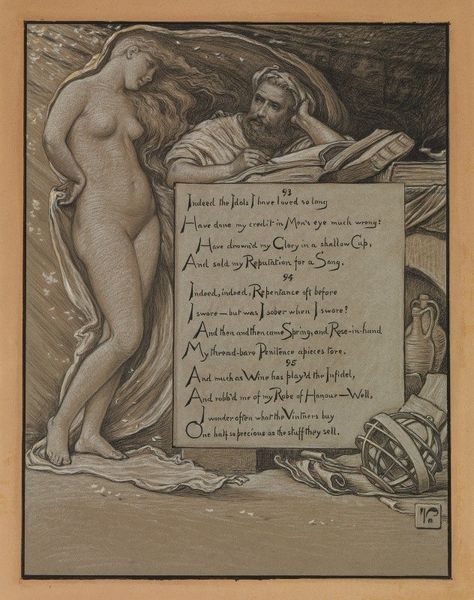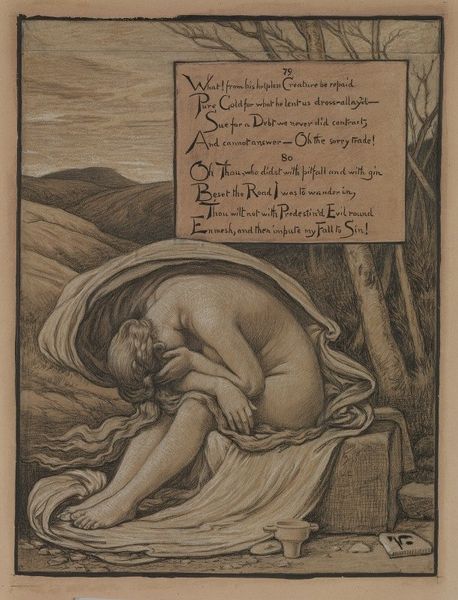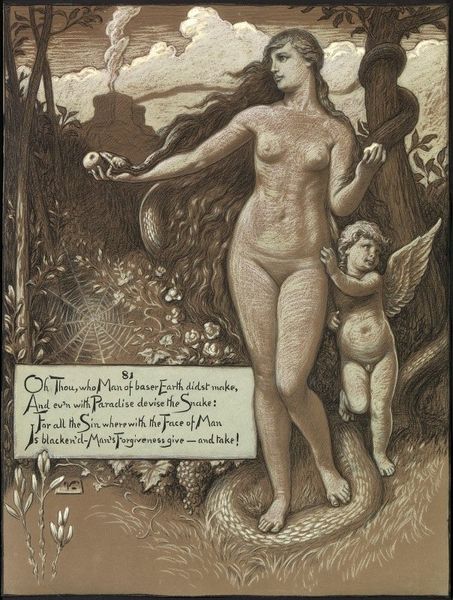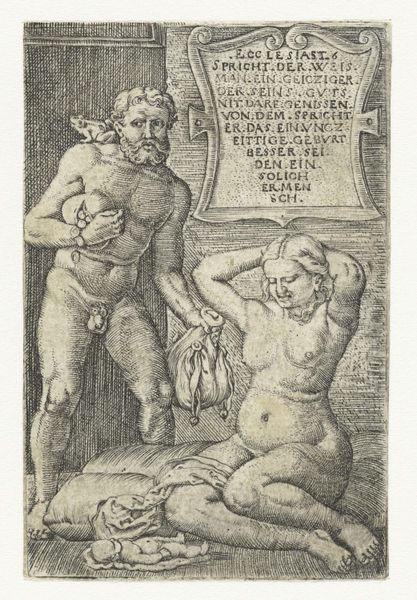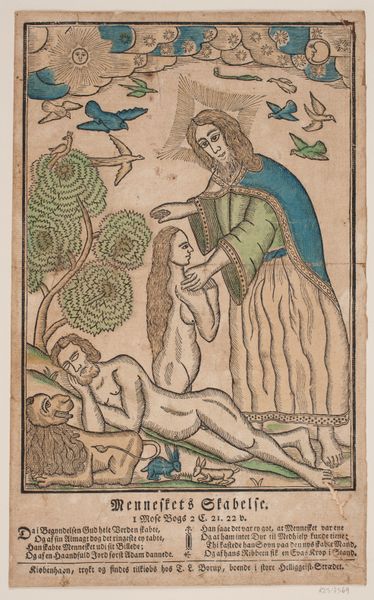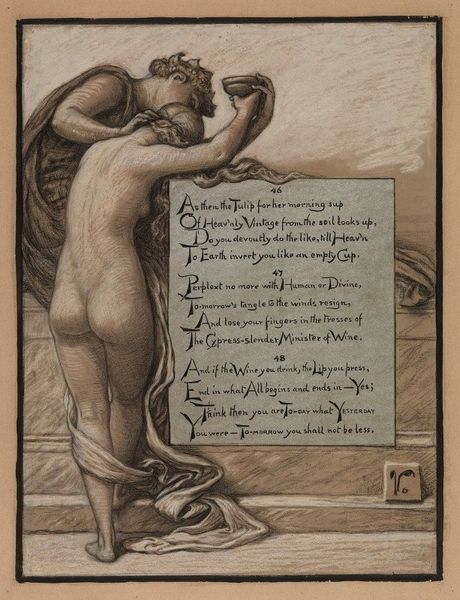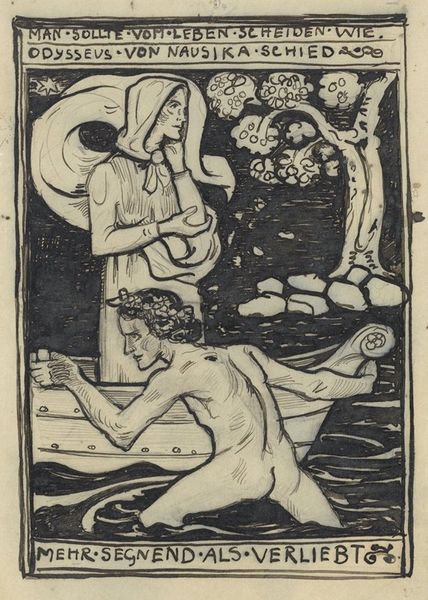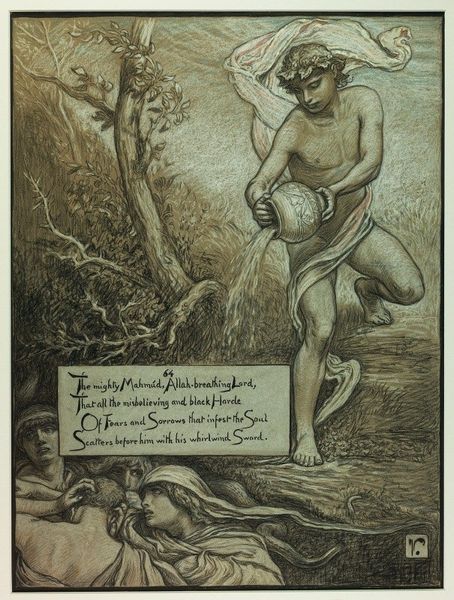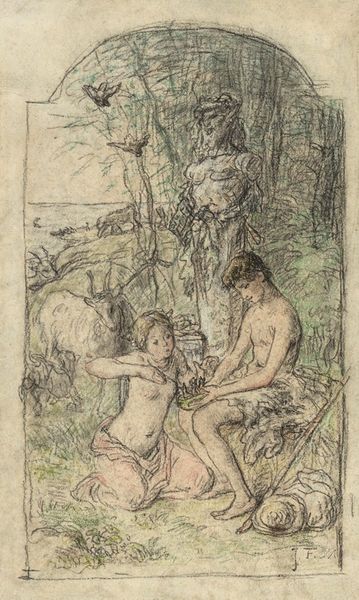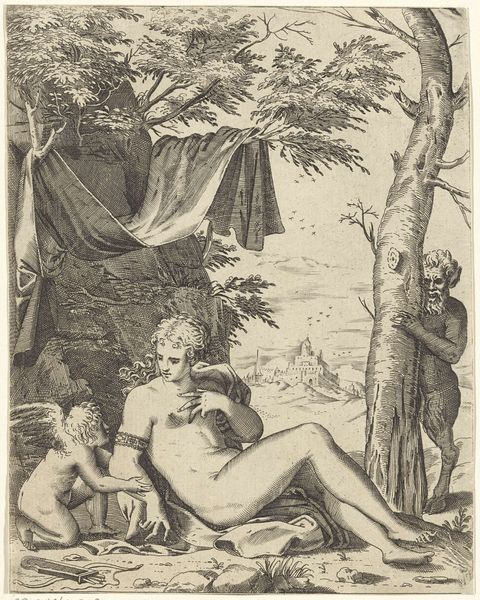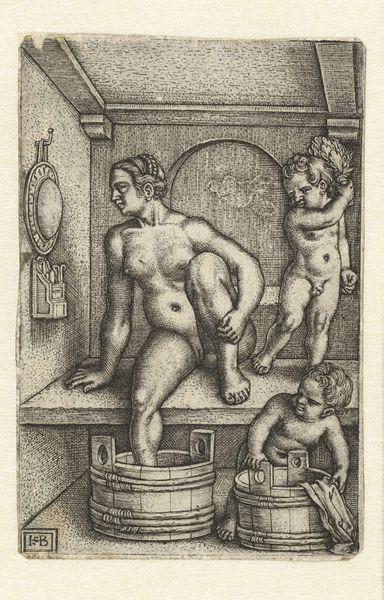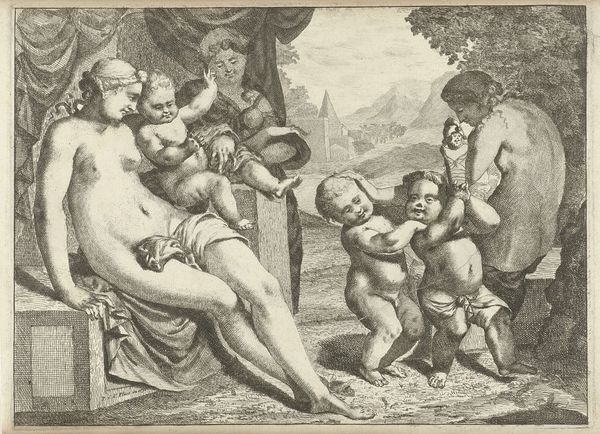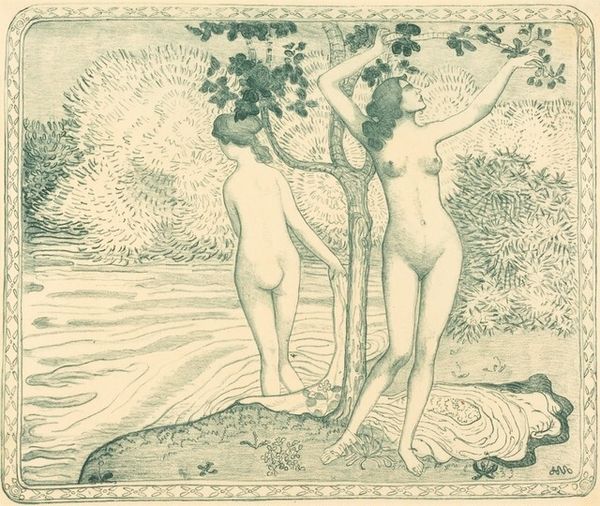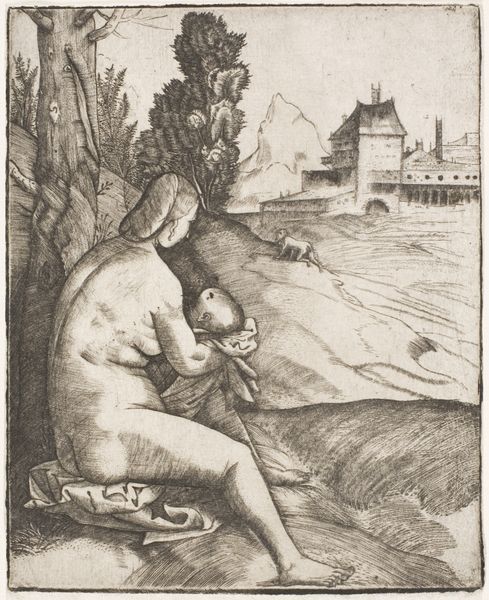
drawing, coloured-pencil, pencil
#
portrait
#
drawing
#
coloured-pencil
#
narrative-art
#
pencil sketch
#
figuration
#
momento-mori
#
coloured pencil
#
pencil
#
symbolism
#
portrait drawing
#
watercolour illustration
Copyright: Public Domain: Artvee
Editor: Here we have Elihu Vedder’s “The Last Man,” created between 1883 and 1884, using pencil and colored pencil. There’s such a stark feeling here; the composition with the figures amidst those skulls is intense. What strikes you about it? Curator: Initially, the formal arrangement. Notice the stark division of the pictorial plane; the poem at the top mirrors the field of skulls at the bottom. Observe how the male figure intersects vertically through these two contrasting zones, a sinuous line echoing in the serpent entwined around him. Consider the visual relationship created by this contrast and repetition. Editor: That division is very pronounced, isn't it? So, would you say Vedder is using the composition itself to create a kind of narrative or meaning, aside from the overt symbolism of the skulls? Curator: Precisely. Disregard, for a moment, the narrative suggestion. The opposition of darkness to light, for example, in the coloring and the textural differentiation in the drawing itself; notice the soft hatching used for the angel compared with the harsher, more defined lines used for the standing figure. Consider those formal dichotomies in terms of semiotic binary oppositions such as active versus passive, life versus death. Editor: So it's less about the man *being* the last one, and more about the tension Vedder builds into the work itself. It's interesting to think of the figure not just as a symbol, but as a point of intersection of all those forces. Curator: Indeed. Art invites us to consider form and content inseparably. A careful observation of the visual grammar of an artwork such as this can open surprising interpretative possibilities, even before engaging historical or social narratives. Editor: I see what you mean. I was so caught up in the symbolism, I almost missed the push and pull of the composition itself. Thanks for pointing that out.
Comments
No comments
Be the first to comment and join the conversation on the ultimate creative platform.
